
The Amstrad CPC is a series of 8-bit home computers produced by Amstrad between 1984 and 1990. It was designed to compete in the mid-1980s home computer market dominated by the Commodore 64 and the ZX Spectrum, where it successfully established itself primarily in the United Kingdom, France, Spain, and the German-speaking parts of Europe.
The Multiface was a hardware peripheral released by Romantic Robot for several 1980s home computers. The primary function of the device was to dump the computer's memory to external storage. Pressing a red button on the Multiface activated it. As most games of the era did not have a save game feature, the Multiface allowed players to save their position by saving a loadable snapshot of the game. Home computer software of the early 1980s was typically loaded into RAM in one go, with copy protection measures concentrating the loading phase or just after it. The snapshot feature could be used after copy protection routines had been executed, to create a backup that was effectively unprotected against unauthorised distribution. Later models of the Multiface mitigated this by requiring the device to be present when re-loading the dumps into memory, making the dumps useless to people without a Multiface. Software producers also reacted to the threat by using routines that would prevent execution of the product if it detected that a Multiface was present and by loading the software in multiple parts, thus requiring the presence of the original, copy-protected media.
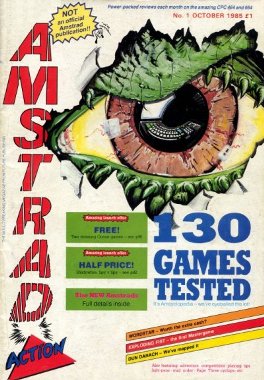
Amstrad Action was a monthly magazine, published in the United Kingdom, which catered to owners of home computers from the Amstrad CPC range and later the GX4000 console.
Newsfield Publications Ltd was a British magazine publisher during the 1980s and early 1990s.

Barbarian: The Ultimate Warrior is a 1987 video game developed and published by Palace Software for the Amstrad CPC, Commodore 64, and ZX Spectrum. The game was ported to many other systems and was licensed to Epyx who published it as Death Sword in the United States.

Laser Squad is a turn-based tactics video game, originally released for the ZX Spectrum and later for the Commodore 64, Amstrad CPC, MSX, Amiga, Sharp MZ-800 and Atari ST and PC computers between 1988 and 1992. It was designed by Julian Gollop and his team at Target Games and published by Blade Software, expanding on the ideas applied in their earlier Rebelstar series. Laser Squad originally came with five mission scenarios, with an expansion pack released for the 8-bit versions, containing a further two scenarios.

The GX4000 is a video game console that was manufactured by Amstrad. It was the company's short-lived attempt to enter the games console market. The console was released in Europe in 1990 and was an upgraded design based on the then still-popular CPC technology. The GX4000 shared hardware architecture with Amstrad's CPC Plus computer line, which was released concurrently. This allowed the system to be compatible with the majority of CPC Plus software.
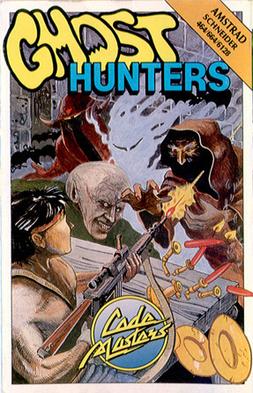
Ghost Hunters is a platform game written by the Oliver twins for the Amstrad CPC and published by Codemasters in January 1987. It was also converted and released for the ZX Spectrum (1987) and Commodore 64 (1989) platforms. The game combines platform-style action with shooting gameplay similar to that found in the game Operation Wolf. It was conceived as a sequel to Super Robin Hood, although it has little to do with this game other than using a modified version of its engine. The twins have credited the film Ghostbusters and the cartoon series Scooby-Doo for influencing the game.

Amstrad Computer User was the official magazine for the Amstrad CPC series of 8-bit home computers. This monthly publication, usually referred to as ACU by its readers, concentrated more on the hardware and technical side of the Amstrad range, although it had a small dedicated games section as well.
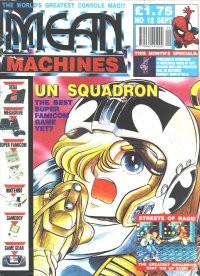
Mean Machines was a multi-format video game magazine published between 1990 and 1992 in the United Kingdom.
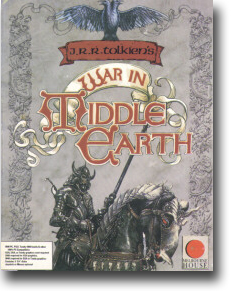
War in Middle Earth is a real-time strategy game released for the ZX Spectrum, MSX, Commodore 64, Amstrad CPC, MS-DOS, Amiga, Apple IIGS, and Atari ST in 1988 by Virgin Mastertronic on the Melbourne House label.

Wonder Boy is a 1986 platform game published by Sega and developed by Escape. Originally designed for arcades, it was later ported to the SG-1000, Mark III/Master System and Game Gear video game consoles by Sega, and to the ZX Spectrum, Commodore 64 and Amstrad CPC home computers by Activision. The game is also known as Super Wonder Boy for its Sega Mark III release in Japan and Revenge of Drancon for its Game Gear release in North America. A high definition remake of the game, titled Wonder Boy Returns, was developed by CFK and released on Steam on October 12, 2016. Wonder Boy was rereleased in 2022 as part of Wonder Boy Collection for the Nintendo Switch and PlayStation 4 which includes its versions on arcade, Master System, SG-1000 and Game Gear.
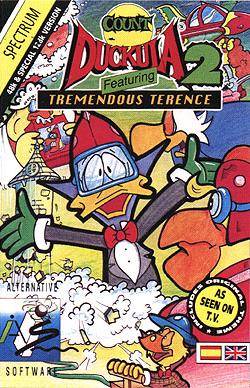
Count Duckula 2 is a computer game for the ZX Spectrum and Amstrad CPC released in 1992 by Alternative Software.
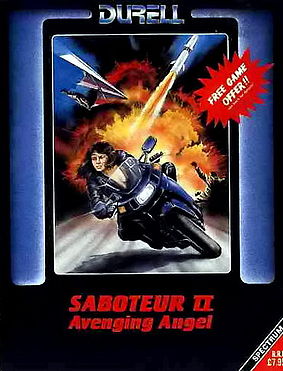
Saboteur II: Avenging Angel, also known as Saboteur 2, is an action-adventure game created by Clive Townsend and released by Durell Software in 1987 for the ZX Spectrum, Amstrad CPC, Commodore 64, and MS-DOS compatible operating systems. A sequel to 1985's Saboteur, the player controls a sister of Ninja from the first game on a mission to avenge his death. Saboteur II was one of the first action-adventure games with a female protagonist and was well received by critics.

Fun School is a series of educational packages developed and published in the United Kingdom by Europress Software, initially as Database Educational Software. The original Fun School titles were sold mostly by mail order via off-the-page adverts in the magazines owned by Database Publications. A decision was made to create a new set of programs, call the range Fun School 2, and package them more professionally so they could be sold in computer stores around the UK. Every game comes as a set of three versions, each version set to cater for a specific age range.

Brian Clough's Football Fortunes is a sports video game featuring English football player Brian Clough. It was released in 1987 for the Amiga, Amstrad CPC, Amstrad PCW, Atari 8-bit family, Atari ST, BBC Micro, Commodore 16, Plus/4, Commodore 64, MS-DOS, Acorn Electron, MSX, and ZX Spectrum.
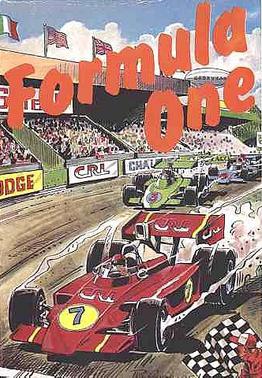
Formula One is a Formula One racing management video game published in 1985 by CRL Group PLC. It was developed by G.B. Munday and B.P. Wheelhouse for the ZX Spectrum, and converted to Amstrad CPC by Richard Taylor.

Game Over II is a combination scrolling shooter and platform game developed and published by Dinamic Software in 1987 for the ZX Spectrum, MSX, MS-DOS, Amstrad CPC, Commodore 64, and Atari ST.

Human Killing Machine is a 2D fighting video game. The game was developed by British company Tiertex, who hired external team Blue Turtle to produce the graphics, and published by U.S. Gold, released in March 1989. It was touted as a sequel to Tiertex's home computer conversion of Street Fighter. It was released for 8-bit and 16-bit home computer formats.

Mickey Mouse: The Computer Game, also known as just Mickey Mouse, is an action game developed and published by Gremlin Graphics in 1988 for the Amiga, Amstrad CPC, Atari ST, Commodore 64, and ZX Spectrum.


















